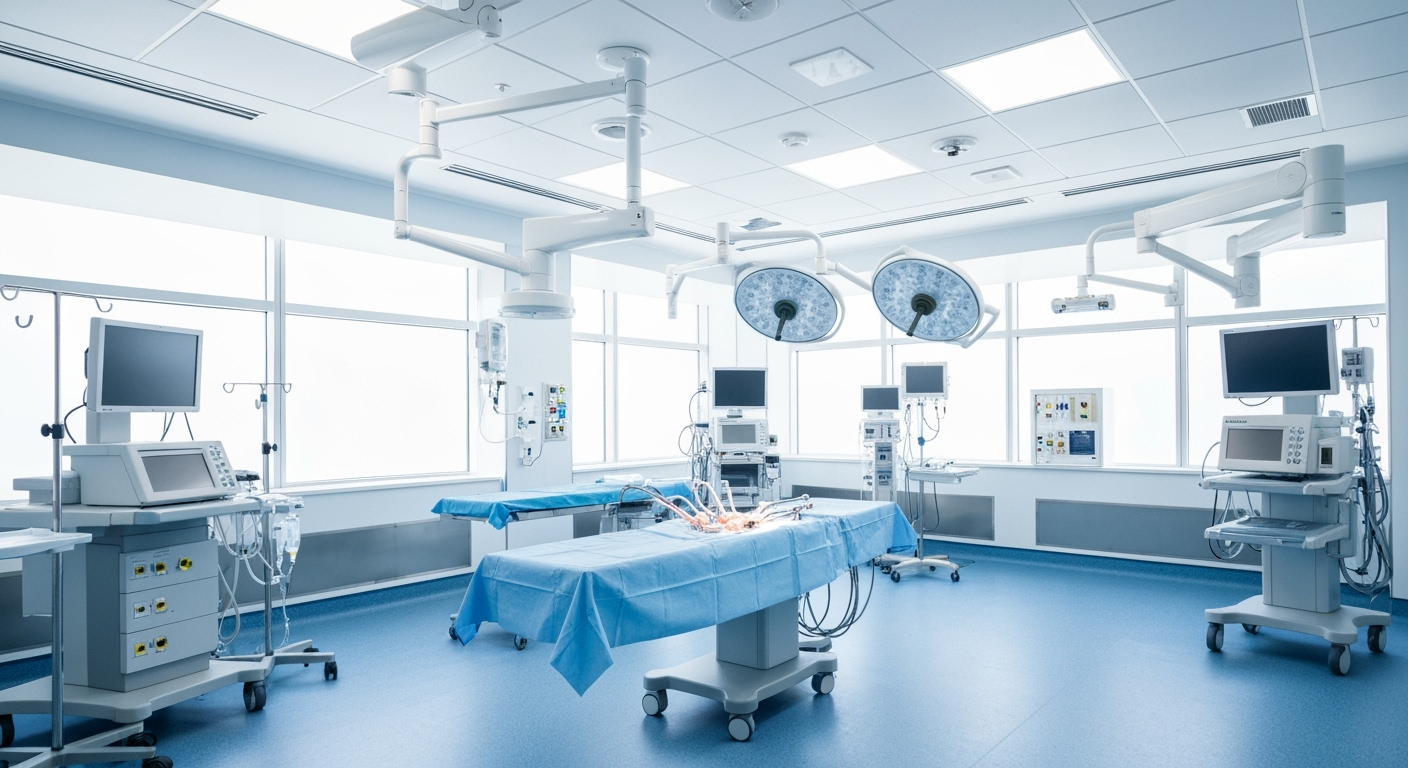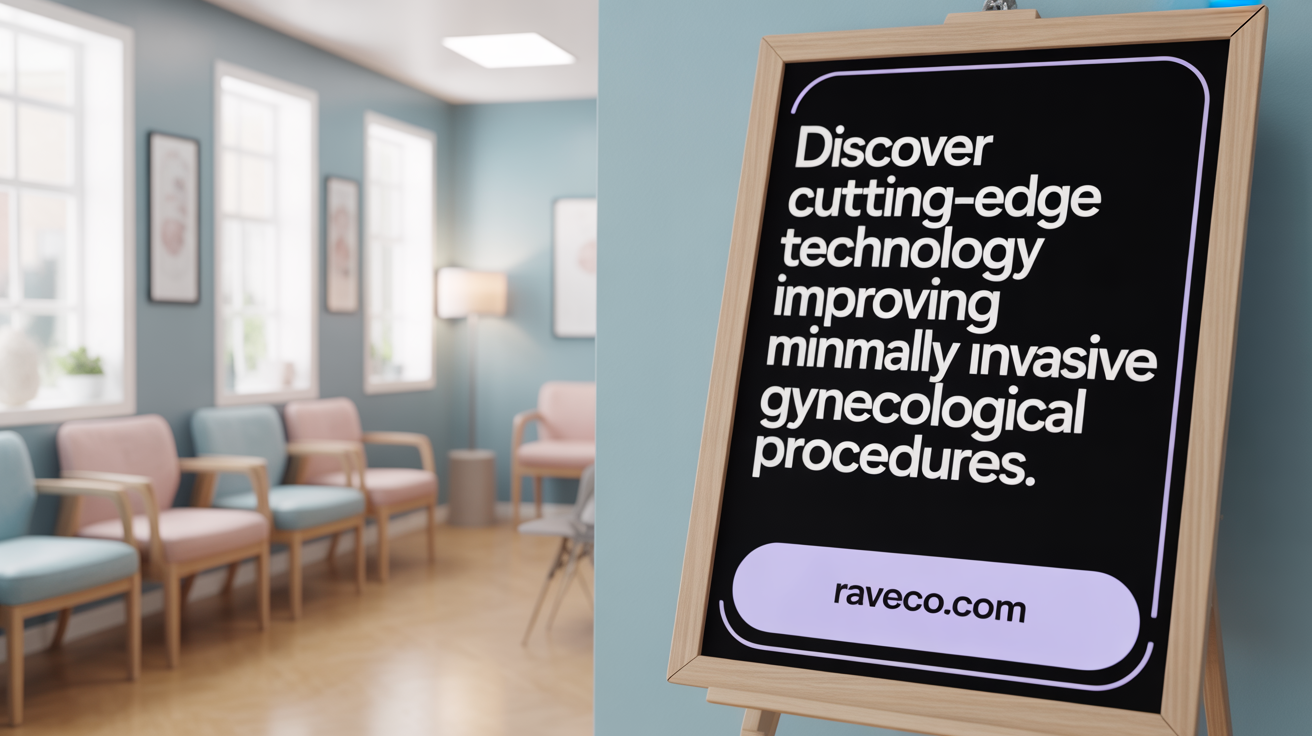Recognizing the Right Time to Address Female Infertility: Key Indicators and Expert Care in Queens

Understanding the Impact of Skilled Laparoscopy on Women's Recovery
Laparoscopic surgery has rapidly become a cornerstone in women’s healthcare, transforming the recovery experience after complex gynecologic procedures. Thanks to advances in surgical technology and surgeon expertise, minimally invasive laparoscopic techniques provide smaller incisions, reduced trauma, and faster healing. This article explores the multifaceted benefits of skilled laparoscopic surgery that accelerate recovery times and improve health outcomes for women.
General Advantages of Minimally Invasive Laparoscopic Surgery in Gynecology
 Minimally invasive laparoscopic surgery has transformed the approach to gynecological procedures by offering several notable benefits. This technique involves making small incisions, usually less than 1.5 centimeters, through which a high-definition camera (laparoscope) and specialized instruments are inserted. The precision and visibility provided by the laparoscope enable surgeons to perform complex operations with greater accuracy.
Minimally invasive laparoscopic surgery has transformed the approach to gynecological procedures by offering several notable benefits. This technique involves making small incisions, usually less than 1.5 centimeters, through which a high-definition camera (laparoscope) and specialized instruments are inserted. The precision and visibility provided by the laparoscope enable surgeons to perform complex operations with greater accuracy.
One of the primary advantages is the reduction in trauma to internal tissues. Because the incisions are tiny, there is less disruption to surrounding organs, leading to decreased postoperative pain and faster healing. Smaller wounds also significantly lower the risk of infections and the formation of scar tissue, known as adhesions, which can complicate future health issues.
Patients typically experience shorter hospital stays, often being discharged the same day or within hours after the procedure. This minimizes hospital-related risks and reduces healthcare costs. Additionally, many patients are able to return to their normal routines, including work and daily activities, within just a few days to one week, vastly improving quality of life.
Another fundamental benefit is the enhanced surgical precision that the high-definition laparoscope offers. The clear, magnified view of internal structures allows for careful, targeted intervention—reducing the risk of complications and increasing the likelihood of successful outcomes.
In summary, laparoscopic gynecological surgeries provide less pain, minimal scarring, faster recovery, lower infection risk, and more accurate procedures. These advantages make laparoscopy a preferred choice for many women needing treatment for conditions like endometriosis, ovarian cysts, fibroids, and hysterectomy, ensuring safer, more efficient, and less invasive care.
Why Laparoscopic Surgery Results in Quicker Healing Compared to Open Surgery

Why does laparoscopic surgery generally result in quicker healing compared to open surgery?
Laparoscopic surgery is a minimally invasive technique that employs small incisions—usually less than 1.5 centimeters—using specialized instruments and a high-definition camera called a laparoscope. These tiny incisions cause significantly less tissue damage and trauma compared to the larger wounds from traditional open surgery.
This reduction in tissue injury leads to decreased internal inflammation and a lower risk of infections. Because the wounds are smaller and less invasive, healing occurs faster with fewer complications. Additionally, laparoscopic procedures produce less internal and external scarring, which minimizes the development of adhesions—bands of scar tissue that can cause pain and other issues.
The enhanced visualization offered by the high-resolution camera allows surgeons to perform precise movements, reducing unnecessary tissue manipulation. This precision further diminishes trauma, promotes faster tissue regeneration, and shortens recovery times.
As a result of these factors, patients generally experience less post-surgical pain, shorter hospital stays—often discharge within a day or two—and a quicker resumption of daily routines and activities. Overall, the combination of smaller incisions, reduced inflammation, fewer adhesions, and improved surgical accuracy makes laparoscopic surgery a preferred method for faster healing.
For more detailed comparisons between laparoscopic and open surgery on healing times, search: "faster healing laparoscopic vs open surgery."
Technological and Procedural Advances Enhancing Laparoscopic Surgery

What are the technological and procedural benefits of minimally invasive laparoscopic techniques?
Modern laparoscopic surgery has significantly evolved by integrating advanced technology and refined procedures. A core element is the use of high-definition cameras, which provide surgeons with crystal-clear, magnified views of the internal organs. This enhanced visualization helps in performing precise operations, especially in complex cases, reducing risks and improving outcomes.
In addition, 3D laparoscopy takes visualization a step further by offering a three-dimensional, high-definition perspective. This technology improves depth perception, making intricate maneuvers easier for surgeons and shortening operation times.
Robotic-assisted laparoscopic techniques have further transformed the surgical landscape. These systems offer surgeons enhanced precision, stability, and flexibility through robotic arms controlled via a computer console. The robots' increased range of motion allows for meticulous dissection and suturing, especially valuable in delicate gynecological and abdominal procedures.
Procedurally, these technological innovations lead to faster operation times and fewer complications such as bleeding, infection, and tissue trauma. Smaller, more accurate instruments facilitate surgeries through tiny incisions, which means less postoperative pain, minimal scarring, and quicker healing.
Economically, minimally invasive techniques often result in reduced hospital stays, sometimes even same-day discharge, decreasing overall healthcare costs. Psychologically, patients benefit from less visible scarring and faster recovery, which can reduce anxiety related to surgery and enhance their quality of life.
In summary, the integration of high-definition imaging, 3D visualization, robotic assistance, and other innovations has made laparoscopic procedures safer, more efficient, and more patient-friendly. These advancements continue to expand the range of conditions treatable with minimally invasive approaches, providing substantial benefits over traditional open surgery.
Specific Benefits Driving Faster Recovery in Women Undergoing Laparoscopic Surgery
 Laparoscopy provides numerous advantages that help women recover faster from surgery. One of the most notable benefits is the reduction of inflammation. Since laparoscopy minimizes tissue manipulation and internal exposure, it results in less inflammatory response compared to traditional open surgery. This lower inflammation level reduces swelling and accelerates healing.
Laparoscopy provides numerous advantages that help women recover faster from surgery. One of the most notable benefits is the reduction of inflammation. Since laparoscopy minimizes tissue manipulation and internal exposure, it results in less inflammatory response compared to traditional open surgery. This lower inflammation level reduces swelling and accelerates healing.
Another important benefit is the decrease in postoperative adhesions. Easier to develop after open surgeries, adhesions are bands of scar tissue that can cause future complications. The smaller incisions and less tissue disruption with laparoscopy significantly reduce the formation of these adhesions, lowering the risk of chronic pain and organ adhesion issues.
Smaller scars are also an attractive feature of this approach. Incisions as small as a few millimeters to a centimeter heal quickly with minimal visible scarring, improving cosmetic outcomes. Along with better healing, these tiny cuts reduce the risk of infection, a common concern in more invasive surgeries.
Patients often experience less postoperative pain due to the smaller incisions and less tissue trauma. This decreased pain means they are less dependent on potent pain medications, which can have side effects. The milder discomfort supports earlier mobilization and leads to shorter hospital stays.
By enabling a quicker return to normal routines, laparoscopy helps women resume work, daily activities, and social life sooner. Usually, women can go back to work within one to three weeks, vastly improving their quality of life after surgery.
In summary, specific benefits like reduced inflammation, fewer adhesions, minimal scarring, less postoperative pain, and shorter hospital stays all contribute to faster recovery in women undergoing laparoscopic procedures.
The Critical Role of Surgical Expertise in Optimizing Recovery Outcomes

How does skilled laparoscopic surgery contribute to faster recovery and improved health outcomes?
Skilled laparoscopic surgery plays a vital role in enhancing patient recovery and health. When surgeons have advanced training and experience, they can perform procedures with greater precision, using techniques like 3D laparoscopy and robotic assistance. This improves visualization, minimizes tissue damage, and reduces the likelihood of complications.
The use of high-definition, three-dimensional imaging allows surgeons to operate more accurately, especially during complex surgeries. Robotic assistance further enhances surgical dexterity with smaller, more controlled movements, leading to less trauma.
This combination of skill and technology results in several benefits. Smaller incisions cause less pain and blood loss, which shortens hospital stays and accelerates wound healing. Additionally, precise interventions reduce the formation of adhesions and other postoperative issues.
As a result, patients experience less discomfort, fewer complications, and a quicker return to daily activities. Overall, the expertise of surgeons greatly influences surgical success, affecting recovery speed and long-term health outcomes.
Impact of 3D laparoscopy and robotic assistance
Advanced methods like 3D laparoscopy and robotic surgery significantly improve surgical accuracy. These technologies provide high-resolution, magnified views of internal organs, enabling surgeons to perform delicate procedures more safely.
Robotic systems allow for enhanced precision, reduced tissue trauma, and minimized bleeding, all of which contribute to faster healing and less postoperative pain. Such innovations also decrease the risk of errors, lowering complication rates and recurrence.
Reducing complications and recurrence through expert technique
Expert surgeons employ meticulous techniques to prevent common issues such as infections, bleeding, and adhesions. Careful handling of tissues, effective cauterization, and precise removal of diseased tissue minimize the likelihood of reoperation.
This expertise is especially crucial in complex cases like treatment of endometriosis or fibroids, where complete removal is essential to prevent recurrence. High skill levels ensure thorough and accurate procedures, improving the long-term success rate.
Enhanced precision leading to minimized trauma and improved healing
Precision in laparoscopic surgeries ensures minimal tissue manipulation and smaller incisions. This approach reduces inflammation and promotes faster tissue repair.
Smaller surgical trauma translates to fewer pain medications, reduced swelling, and quicker return to normal function. It also helps prevent the development of adhesions, which can cause future complications.
Overall effect on patient well-being and faster return to normal life
The combination of advanced technology and surgical expertise results in a smoother recovery process. Patients often leave the hospital sooner, experience less pain, and return to work and routine activities earlier.
This rapid recovery not only improves physical health but also reduces emotional and psychological stress, contributing to overall well-being. Skilled laparoscopic surgery truly makes a significant difference in the patient experience and outcomes.
The Transformative Power of Skilled Laparoscopy for Women's Healing
Skilled laparoscopic surgery represents a major advancement in women’s healthcare, offering a combination of technological innovation and expert technique that delivers faster recovery and better health outcomes. By reducing trauma through small incisions, enhancing surgical precision with advanced imaging, and minimizing complications such as infections and adhesions, this minimally invasive approach allows women to return to their daily lives quicker with less pain and scarring. The expertise of the surgeon plays a pivotal role in maximizing these benefits, ensuring safer procedures and smoother healing. As laparoscopic methods continue to evolve, they promise even more efficient and patient-friendly treatments, making skilled laparoscopy an essential choice for faster, safer recovery in women.
References
- Surprising Benefits of Laparoscopic Surgery You Didn't Know About
- Laparoscopic Surgery: The Future of Surgical Precision
- Comparative Analysis of Laparoscopic Versus Open Procedures in ...
- 5 Reasons To Choose Laparoscopy Over Conventional Treatment
- Benefits of Minimally Invasive Surgery - Laparoscopic.MD
- The Benefits of Robotic and Laparoscopic Surgery
- The Role of Laparoscopy in Modern Gynaecology - Paul's Hospital
- How Laparoscopic Surgery is Transforming Gynecologic Care
- Why Not? Advantages of Laparoscopy in Major Emergency: A Review
- Laparoscopic Surgery | Advantia Health





.png)